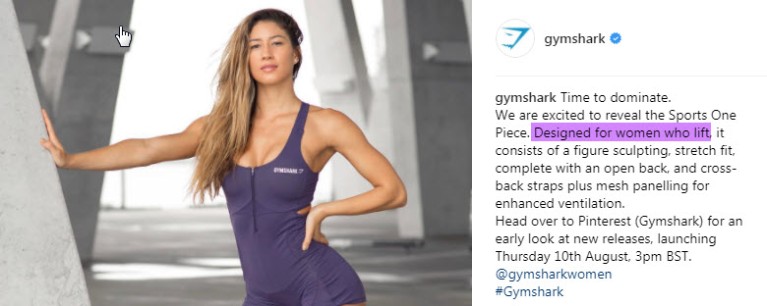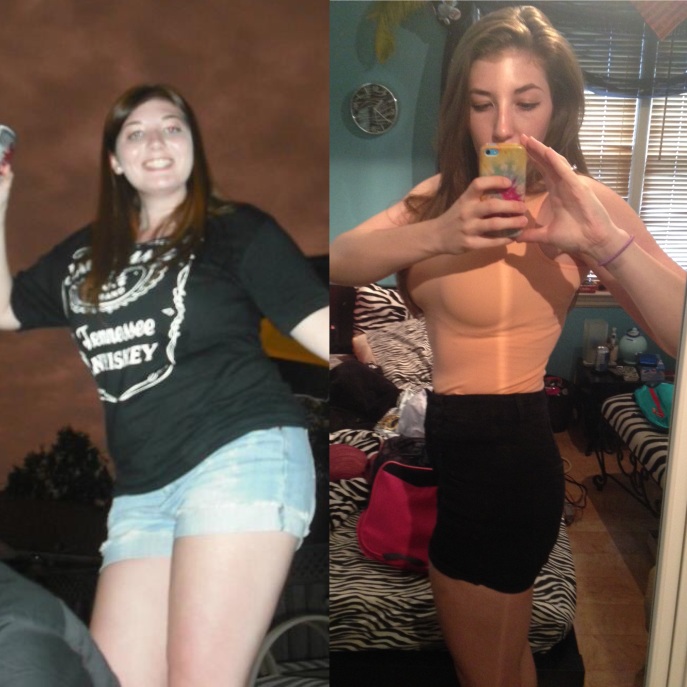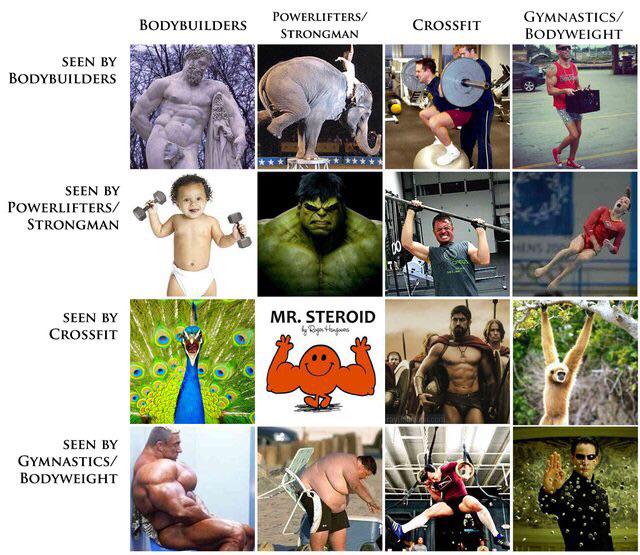It was a quiet Wednesday afternoon in the online powerlifting community:
Powerbellies were resting, nose torque was gently nestled in its protective tupperware container, and singlets were all folded and tucked in for the day.
That is, until, Gymshark unleashed its secret weapon to cracking the powerlifting consumer. The dominating purple wondersuit, the Sports One Piece, was designed for powerlifting. Complete with criss-cross straps, an open back for ventilation and convenient(?) front zipper, the garment is the solution to every “what will I train in today?” conundrum for lady powerlifters – or so the Gymshark masterminds thought.
The poor soul responsible for Gymshark’s social media channels was woefully unprepared for the powerlifting community’s digital onslaught spurred by the phrase designed for powerlifting.
“Designed for powerlifting,” they say “but not IPF approved.”
The comments varied (I’ll include samples below), but can all be summarized by a response type of #TRIGGERED – these three words were so powerful, that even I felt compelled to add to the conversation:

Before I dig deeper into reading the powerlifting community’s response, if you are not familiar with Gymshark, let me just give you a quick brand orientation.
Gymshark 101
Get your learning caps on, because I’m about to drop some ~*knowledge*~
Gymshark is a UK brand that has taken North America by storm. If you’ve been to any type of fitness expo, you’ll see Gymshark fans in the signature flex leggings or minimalist dry-fit tees. You’ll know it’s Gymshark because of the iconic GYMSHARK embroidered waistband or the reflective geometric kinda-looks-like-a-shark logo.
The brand had humble beginnings in Birmingham, where teenagers Ben Francis and Lewis Morgan created a website and started hand printing t-shirts in a tiny back room. For the full backstory, watch the video below:
Despite being across the pond, Gymshark has an insane international reach. There are many North American-grown fitness influencers that are partnered with the brand: honourable mentions include Nikki Blackketter, Whitney Simmons, Jazmine Garcia, and Steve Cook. Earlier this year, Gymshark even collaborated with the aforementioned Nikki Blackketter to design a custom collection that sold out online almost immediately.
With such international success, it makes you wonder: is Gymshark really worth the hype? Is it worth standing in a snaking line measuring multiple blocks of New York City’s downtown? Maybe. Take a look at some of their core values:
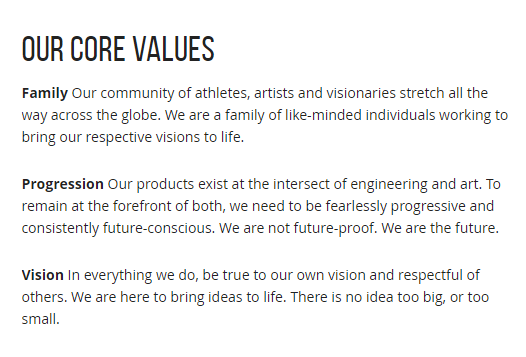
Gymshark’s About Us
These values can be summarized using one of their company slogans: Be a visionary. I can appreciate their focus on continuously improving design and activewear technology. With everyone and their grandmother coming out with an athleisure line, Gymshark doesn’t forget where they started. With a focus on engineering and art, Gymshark fills a gap in the athletic wear industry, seamlessly blending performance with aesthetics – and who doesn’t want to look and feel good while they work out?
I’ve ordered three times from Gymshark, and have been impressed by the amount of quality and detail in their pieces. Every pattern and colour combination is thought out. Each contour exists for a purpose. Gymshark is comfortable with straddling the line between innovation and function and it works
… most of the time.
How many “visionaries” does it take to piss off a powerlifter?
I’m not sure about the answer to this question, but I believe it’s safe to say not a lot of demographic research went into this product launch. Let’s circle back to the issue at hand:
With more and more online communities surfacing, the female strength athlete has more digital resources than ever before. Powerlifting Women, This Is Female Powerlifting, and Girls Who Powerlift are all changing the game when it comes to the perception of women in the gym and those that compete in strength sports. And while support in the strength community is needed for both genders, there are just some issues that are female-specific. Pelvic floor issues, the gymbro gaze, fupa acceptance, and lifting while pregnant are just scratching the surface when it comes to lady lifting topics.
Unlike physique competitions, there is no set body type and no aesthetic symmetry required on a powerlifting platform. This means that across all weight classes, you’ll find a myriad of different body compositions, shapes, and sizes. I’d argue that it is one of the most diverse sports out there. Come as you are, and get strong. It’s just that simple.
With this in mind, Gymshark has a challenge. In order to market to women powerlifters, you have to expand your thinking and garment technology to include very different body types across multiple weight classes.
Here is strike one for Gymshark.
Not a single product in Gymshark’s Women’s collection has XL sizing. This immediately ignores a huge portion of the female powerlifting demographic.
Strike two? No woman powerlifting presence within the Gymshark brand. While they have many respectable female athletes (hiiii jazzypoo & whit: ilysm), none of Gymshark’s ambassadors are powerlifters in the traditional sense. With the powerlifting community growing, I find it very odd that Gymshark has yet to partner with a female strength athlete. YouTube celebs like Megsquats and Amanda Bucci are expanding the fitness YouTube community to include powerlifting. In making serious gains in social following, both Meg and Amanda prove that there really is no excuse for Gymshark to say “there are no women powerlifting influencers that are popular enough.”
Finally, I’m guessing it’s not very innovative for a company to take ownership of their mistakes. Despite the outcry, despite the flurry of comments, Gymshark did the only thing a scared brand could do and simply changed the description on their singlet Instagram post. Instead of apologizing, instead of remedying the situation, Gymshark took advantage of IG’s Editing functionality and erased their marketing fumble… but not before screenshots were taken and feelings were #triggered. Strike three for Gymshark.
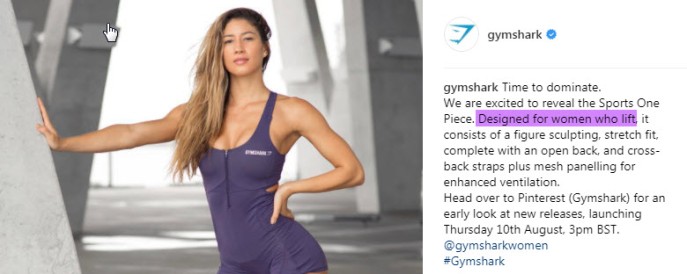
What did we do before the Instagram Edit feature?
The Counter Argument
So it’s not IPF approved (and probably never will be), and maybe it’s not the most functional combination of nylon and elastane in the athletic wear market. Why should powerlifters give it a chance?
Amber Abweh aka Swoleesi takes a sympathetic approach to the Gymshark singlet launch, saying “you do you, boo-boo.”
If you think it’s cute, wear it. Don’t think it’s cute? Don’t wear it.
Yes, it could be that simple, but I believe it signifies something much deeper than that. The “bullying” that Amber alludes to in her video doesn’t come from a place of animosity. Instead, I argue that it’s a collective defense mechanism.
I’ve experienced it. Chances are, if you identify as a powerlifter, you’ve also experienced it. This is a sport that chews you up and asks for more. Hell, I broke my damn arm powerlifting and went back to it like an idiot. It’s my addiction and my magnificent obsession (please tell me you got that CT Fletcher reference).
It’s no secret that powerlifters and strength athletes don’t do what they do for money or fame. But when someone attacks my sport, when someone doesn’t understand why I do it, yeah I get a little miffed. And this was a classic case of misunderstanding and underestimation on Gymshark’s behalf. I don’t think the visionaries imagined how much this sport takes out of athletes, and to just pigeonhole women into a cookie-cutter body shape and say “this is what women powerlifting is about,” just delegitimizes all of the hours spent training, the time used to establish the confidence to walk into a weight room full of men, the hundreds of how-many-sets-you-got-left conversations exchanged again and again… To me, it says “your powerlifting isn’t sexy,” “your hard work isn’t sexy if you don’t look like this fitness model” and it’s 50 shades of wrong. Something’s gotta give, Gymshark. Your visions came from fever dreams.
If you want to commodify strength sports, you have to commodify all of it. Every weight class. Every individual. This was a chance for Gymshark to diversify their brand – even change the fitness industry – and they missed the mark.
What do you think? Am I reading too deep? Will this singlet pass your next equipment check? Let me know in the comments and let’s discuss.
